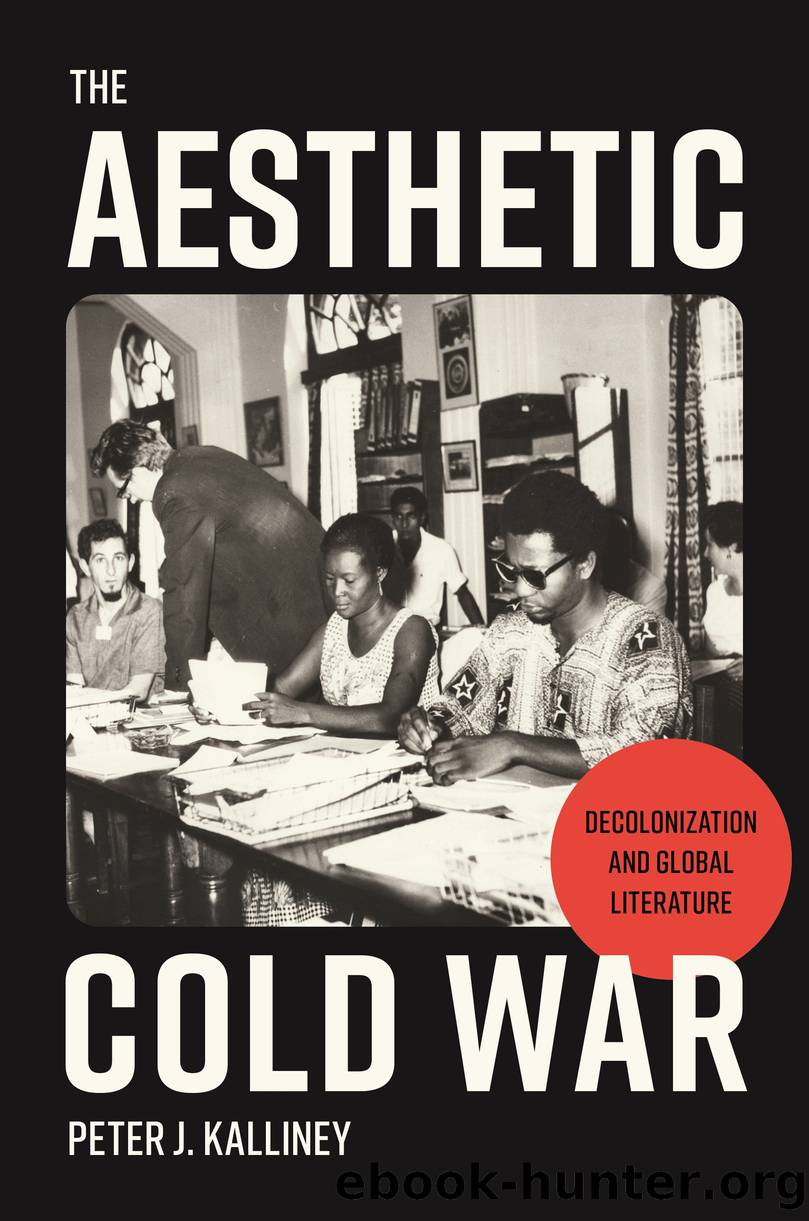The Aesthetic Cold War by Peter J. Kalliney

Author:Peter J. Kalliney
Language: eng
Format: epub
Publisher: Princeton University Press
Published: 2022-07-05T00:00:00+00:00
Space Fiction
Lessingâs interest in what she called space fiction, or what might be called speculative fiction nowadays, has been difficult for literary historians to satisfactorily explain. For many fans of The Golden Notebook, this turn was hard to countenance. But as Michael Trask shows in Ideal Minds: Raising Consciousness in the Antisocial Seventies, the barrier between the literature of ideas (which is how I would categorize The Golden Notebook) and science fiction was quite porous in and around the 1970s. Trask argues that both the literature of ideas and science fiction pursued compatible and mutually reinforcing techniques for describing subjectivity, developing a theory of personhood that relies on the supposedly limitless powers of cognition and the possibility of enlarging and enhancing human consciousness. In comparing science fiction novelist Philip K. Dick and highborn poet James Merrill, for instance, Trask shows how the latterâs masterpiece The Changing Light at Sandover presents âsupernatural entitiesâ who enjoy âunlimited access to everyoneâs thoughtsââsimilar to the characters populating Dickâs fiction.31 Not only heightened thinking, but paranormal forms of perception, became a prominent way of aestheticizing the possible development of human species-potential in the 1970s. Likewise, in The African Novel of Ideas: Philosophy and Individualism in the Age of Global Writing, Jeanne-Marie Jackson observes that the novel of ideas depends in part on expanding the space for individual thought: such novels grant ideas and consciousness âa force and even an ontology of their own by a turn to narrative designs that advance individual integrity, as against porosity or dissolution.â32 Lessingâs experiments in speculative fiction take this injunction about strengthening rather than winnowing subjectivity literally. With these insights, we are in a better position to see how Lessingâs generic promiscuity fits into a broader web of literary movements of the postwar years. Add to this Lessingâs pronounced anticolonialism, her longstanding interest in psychoanalysis and Sufism, and the experience of being a target of state surveillance, and it becomes a little easier to regard Lessingâs swerve into science fiction as less a tangential dead-end and more a widening of her creative options.
Taken as a group, the novels of the Children of Violence series are part of a lengthy but recognizable bildungsroman, so much so that Lessing herself was a bit defensive about their putatively realist form. In the afterword to The Four-Gated City, Lessing describes the series as âwhat the Germans call a Bildungsroman,â as if the loan word had not made much headway into English. âThis kind of novel has been out of fashion for some time,â she reports, but we should not therefore conclude âthat there is anything wrongâ with this type of fiction (655). The series conforms roughly to the template of the colonial coming-of-age narrative identified by Jed Esty in Unseasonable Youth: Modernism, Colonialism, and the Fiction of Development: a main character who feels hopelessly stuck, or ruthlessly stranded, between the rigid temporal logic of capitalist development and the messy social geographies of colonial difference. By the fifth and final novel of the series, however, the narrative of bildung starts to go strange.
Download
This site does not store any files on its server. We only index and link to content provided by other sites. Please contact the content providers to delete copyright contents if any and email us, we'll remove relevant links or contents immediately.
4 3 2 1: A Novel by Paul Auster(12222)
The handmaid's tale by Margaret Atwood(7637)
Giovanni's Room by James Baldwin(7117)
Asking the Right Questions: A Guide to Critical Thinking by M. Neil Browne & Stuart M. Keeley(5577)
Big Magic: Creative Living Beyond Fear by Elizabeth Gilbert(5557)
Ego Is the Enemy by Ryan Holiday(5228)
The Body: A Guide for Occupants by Bill Bryson(4887)
On Writing A Memoir of the Craft by Stephen King(4823)
Ken Follett - World without end by Ken Follett(4597)
Adulting by Kelly Williams Brown(4438)
Bluets by Maggie Nelson(4431)
Eat That Frog! by Brian Tracy(4387)
Guilty Pleasures by Laurell K Hamilton(4279)
The Poetry of Pablo Neruda by Pablo Neruda(3990)
Alive: The Story of the Andes Survivors by Piers Paul Read(3924)
White Noise - A Novel by Don DeLillo(3915)
Fingerprints of the Gods by Graham Hancock(3899)
The Book of Joy by Dalai Lama(3857)
The Bookshop by Penelope Fitzgerald(3721)
